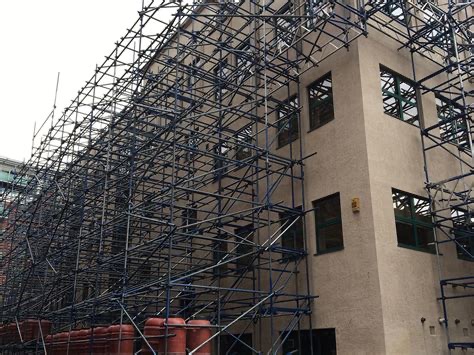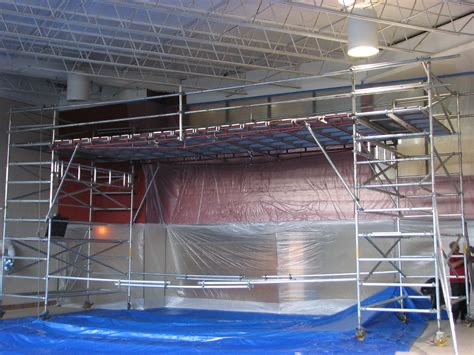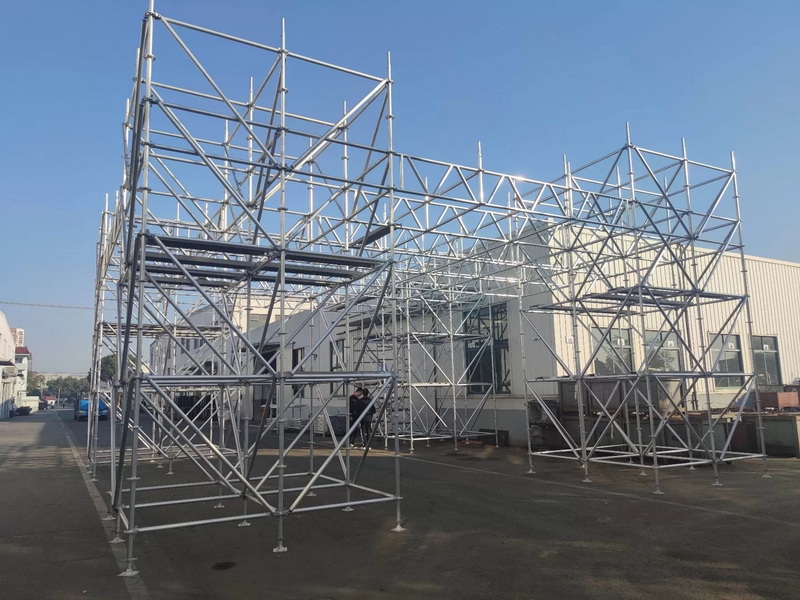Content Menu
● What Is Upright Aluminum Scaffolding?
● Key Advantages for Residential Use
>> 1. Lightweight and Portable
>> 2. Corrosion Resistance
>> 3. High Load Capacity
>> 4. Ease of Assembly
>> 5. Space Efficiency
>> 6. Versatility
● Residential Applications
>> Exterior Projects
>> Interior Projects
>> OSHA Compliance for Residential Use
>> Common Safety Features
>> Safe Usage Tips
● Cost Comparison: Aluminum vs. Alternatives
● Step-by-Step Assembly Guide
>> Tools Required
>> Steps
>> Disassembly and Storage
● Maintenance Tips
● Environmental and Economic Benefits
>> Sustainability
>> Cost Efficiency
● Innovations in Upright Aluminum Scaffolding
>> Advanced Design Features
>> Customizable Accessories
● Case Study: Residential Renovation in California
● Real-World Testimonials
● Conclusion
● FAQ
>> 1. How tall can upright aluminum scaffolding be assembled for residential use?
>> 2. Can I rent upright aluminum scaffolding instead of buying it?
>> 3. Is upright aluminum scaffolding safe on grass or dirt?
>> 4. Are aluminum scaffolds compatible with other scaffolding systems?
>> 5. Can I use upright aluminum scaffolding indoors?
Upright aluminum scaffolding has long been a staple in commercial and industrial construction, but its potential for residential projects is often overlooked. Lightweight, durable, and easy to assemble, upright aluminum scaffolding offers homeowners and contractors a safe, efficient solution for tasks like painting, roofing, gutter cleaning, and exterior renovations. This guide explores the practicality, safety, and cost-effectiveness of using upright aluminum scaffolding in residential settings, supported by technical data, real-world examples, and expert insights.

What Is Upright Aluminum Scaffolding?
Upright aluminum scaffolding refers to modular, mobile tower systems made from high-grade aluminum alloys (e.g., 6061-T6 or 6082-T6). These systems feature adjustable legs, lockable casters, non-slip platforms, and interlocking frames that can be configured into freestanding towers or extended structures. Unlike traditional steel or wood scaffolds, aluminum models prioritize portability without sacrificing strength.
Key Advantages for Residential Use
1. Lightweight and Portable
Aluminum scaffolding weighs about 1/3 of steel scaffolding, making it easy for homeowners to transport and assemble. For example:
- A 6-foot single-wide upright aluminum scaffold weighs ~29 lbs, while a comparable steel model exceeds 80 lbs.
- Foldable designs (e.g., VX Frames) collapse to under 10 inches wide for storage in garages or sheds.
2. Corrosion Resistance
Aluminum's natural oxide layer protects against rust, making it ideal for outdoor residential projects exposed to rain, humidity, or coastal environments.
3. High Load Capacity
Quality upright aluminum scaffolds support up to 500 lbs per platform (distributed load) or 1,000 lbs per structure, sufficient for tools, materials, and multiple workers.
4. Ease of Assembly
Most residential models require no tools and can be set up by 1–2 people in under 30 minutes. Locking hinges, spring-loaded pins, and pre-attached braces simplify the process.
5. Space Efficiency
Narrow single-wide scaffolds (29” width) fit through standard doorways, while double-wide models (54” width) provide ample workspace for larger projects.
6. Versatility
Upright aluminum scaffolding can be configured for single-story or multi-story homes, stairwells, sloped lots, and tight spaces. Accessories such as outriggers, toeboards, and guardrails allow for further customization.

Residential Applications
Exterior Projects
- Roof Repairs: Access eaves, chimneys, or solar panels safely.
- Painting: Reach high walls or trim without ladder instability.
- Gutter Cleaning: Move seamlessly along the roofline with lockable casters.
- Window Installation: Stable platform for handling large or heavy windows.
- Siding Replacement: Maintain a safe, level working area for removing and installing siding.
- Deck and Porch Work: Install railings, lighting, or awnings with ease.
Interior Projects
- Ceiling Work: Paint, install lighting, or repair drywall.
- Stairwell Access: Adjustable legs accommodate uneven surfaces.
- High Shelving: Assemble temporary storage solutions in garages or lofts.
- Vaulted Ceilings: Reach difficult architectural features safely.
- Renovations: Demolition, insulation, or framing in tall rooms.
OSHA Compliance for Residential Use
While OSHA standards primarily target commercial sites, homeowners should follow these guidelines:
- Load Limits: Never exceed the manufacturer's rated capacity (e.g., 500 lbs/platform).
- Stabilization: Use outriggers for towers over 12 feet tall.
- Fall Protection: Install guardrails and toe boards for platforms above 6 feet.
- Platform Security: Ensure platforms are locked in place and not resting loosely on the frame.
- Inspection: Check for bent frames, damaged welds, or missing pins before each use.
Common Safety Features
- Non-Slip Platforms: Textured aluminum or birchwood surfaces prevent slips.
- Locking Casters: Polyurethane wheels with dual brakes ensure stability on driveways, lawns, or uneven terrain.
- Adjustable Legs: Compensate for slopes up to 3 degrees.
- Guardrails and Toeboards: Prevent falls and keep tools from dropping.
Safe Usage Tips
- Never stand on the topmost rung unless guardrails are installed.
- Avoid using scaffolding in high winds or storms.
- Always lock casters before climbing.
- Do not use makeshift planks or ladders atop the scaffold.
Cost Comparison: Aluminum vs. Alternatives
| Feature | Upright Aluminum Scaffolding | Steel Scaffolding | Wood Scaffolding |
| Initial Cost | $800–$2,500 | $500–$1,500 | $200–$800 |
| Lifespan | 10+ years | 5–8 years (with coating) | 2–3 years |
| Maintenance | Minimal (wash periodically) | Regular anti-rust paint | Replace rotten planks |
| Resale Value | High (durable/reusable) | Moderate | Low |
Verdict: Though pricier upfront, aluminum scaffolding's longevity and low maintenance make it cost-effective for recurring residential projects.
Step-by-Step Assembly Guide
Tools Required
- None (tool-free design)
Steps
1. Unfold Base Frames: Expand single-wide (29”) or double-wide (54”) frames.
2. Attach Casters: Lock wheels into base legs and ensure brakes are engaged.
3. Install Horizontal Braces: Connect crossbars to stabilize the structure.
4. Add Platforms: Secure anti-slip boards at desired heights.
5. Install Guardrails: Attach safety rails for elevated platforms.
6. Level Adjustable Legs: Use a spirit level to ensure stability on uneven ground.
Disassembly and Storage
- Remove guardrails and platforms.
- Fold frames and stack components compactly.
- Store in a dry, covered area.
Maintenance Tips
- Cleaning: Rinse with water after outdoor use to remove dirt or debris.
- Lubrication: Apply light machine oil to hinges, locking pins, and casters every 6 months.
- Storage: Keep in a dry, covered area to prevent UV degradation.
- Inspection: Check welds, joints, and platforms for cracks or deformation before each use.
- Replacement: Replace any damaged or excessively worn components immediately.
Environmental and Economic Benefits
Sustainability
Aluminum is highly recyclable, and most upright aluminum scaffolding is made from recycled materials. At the end of its service life, it can be fully recycled, reducing environmental impact compared to wood or coated steel, which often end up in landfills.
Cost Efficiency
Although the initial investment for upright aluminum scaffolding is higher than wood or steel, its longevity, reduced maintenance, and lower replacement frequency lead to a lower total cost of ownership over time. Its high resale value also offsets the upfront cost if you choose to sell after your project.
Innovations in Upright Aluminum Scaffolding
Advanced Design Features
- Quick-Release Locking Pins: Speed up assembly and disassembly.
- Integrated Toe Boards: Prevent tools and materials from falling.
- Color-Coded Components: Simplify assembly, especially for DIYers.
- Expandable Frames: Allow for future height or width increases as needs change.
Customizable Accessories
- Outriggers: Add stability for tall towers or sloped ground.
- Adjustable Platforms: Easily change working height for different tasks.
- Stairwell Kits: Special frames for safe use on stairs.
Case Study: Residential Renovation in California
A homeowner in San Diego used a double-wide upright aluminum scaffold to repaint their two-story Victorian home. Key outcomes:
- Time Saved: 8-hour project completed in 5 hours due to easy repositioning.
- Safety: No falls or injuries despite working on a sloped driveway.
- Cost: $1,200 scaffold rental vs. $3,000+ for professional painters.
- Versatility: The same scaffold was later used for gutter cleaning and attic insulation.
Real-World Testimonials
“I was able to paint my vaulted living room ceiling safely and quickly. The upright aluminum scaffolding was light enough for me and my teenage son to move, and it fit through every doorway.”
– Sarah L., Homeowner, Austin, TX
“We use upright aluminum scaffolding for all our residential siding jobs. It's faster, safer, and more reliable than ladders, especially on uneven yards.”
– Mike R., Remodeling Contractor, Seattle, WA
Conclusion
Upright aluminum scaffolding is not only safe for residential projects but also highly advantageous. Its lightweight design, corrosion resistance, and modularity make it ideal for homeowners tackling DIY renovations or contractors managing multiple jobs. By adhering to load limits, conducting pre-use inspections, and choosing OSHA-compliant models, users can safely elevate their productivity-literally and figuratively. Whether you're painting, repairing, or renovating, upright aluminum scaffolding delivers professional-grade safety and efficiency for residential needs.

FAQ
1. How tall can upright aluminum scaffolding be assembled for residential use?
Most residential towers max out at 25 feet without requiring professional engineering. Beyond this height, consult local building codes.
2. Can I rent upright aluminum scaffolding instead of buying it?
Yes! Rental costs range from $50–$150/day, making it affordable for short-term projects.
3. Is upright aluminum scaffolding safe on grass or dirt?
Yes, but always use stabilizers or outriggers and lock casters to prevent sinking or tipping.
4. Are aluminum scaffolds compatible with other scaffolding systems?
Many models (e.g., EZ Lift™) integrate with Werner or Vault systems for hybrid setups.
5. Can I use upright aluminum scaffolding indoors?
Absolutely. Narrow single-wide models maneuver through doors, and non-marking wheels protect floors.






















